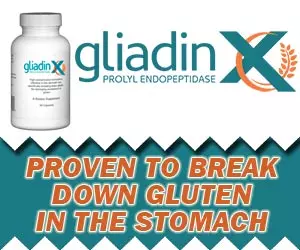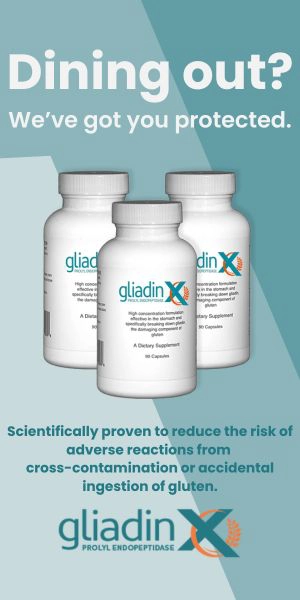
This article originally appeared in the Winter 2004 edition of Celiac.com's Journal of Gluten-Sensitivity.
Celiac.com 09/19/2014 - Experts have decreed that pure oats are safe for people with celiac disease(1,2,3). The definition of this disease is based on a very specific type of injury to the intestinal wall that heals following the removal of gluten from the diet. This intestinal damage, called villous atrophy, is caused by the interaction between the immune system and certain proteins found in wheat, rye, and barley. Identical proteins are not found in oats (although there is also some variation between the protein groups found in wheat, rye, and barley). Further, many newly diagnosed celiac patients have been shown to recover from their celiac symptoms while eating significant quantities of oats and their intestinal biopsies do not show signs of villous atrophy1 (Admittedly, the quantity of oats consumed by these study subjects does not rival the grain protein consumption in a regular, gluten-laden diet, but the quantity is significant). Therefore, this food is considered safe for celiac consumption.
Celiac.com Sponsor (A12):
 Given these facts, it is not surprising that many gastroenterologists are now recommending that their patients eat oats. Some claim that patients are more likely to follow a gluten-free diet if that diet allows oats. Others point to the definition of celiac disease, which clearly requires gluten-induced villous atrophy. Still others insist that since we now know which proteins cause the villous atrophy, oats must be safe for celiac patients to consume.
Given these facts, it is not surprising that many gastroenterologists are now recommending that their patients eat oats. Some claim that patients are more likely to follow a gluten-free diet if that diet allows oats. Others point to the definition of celiac disease, which clearly requires gluten-induced villous atrophy. Still others insist that since we now know which proteins cause the villous atrophy, oats must be safe for celiac patients to consume.
There are several problems with these perspectives, beginning with the assumption that patients will be more compliant with the diet if it includes oats. I have explored the medical literature and have been unable to find a single study that investigates dietary compliance as a function of including oats in the gluten-free diet. I’d be happy to hear about such a study. But until the question is investigated, the assumption is just one more opinion afloat in a sea of unfounded beliefs about grains and diet.
Many celiac patients experience an addictive element in gluten. I have long suspected that is the result of morphine-like, opioid peptides found in the digests of gluten(4-8). Are some peptides from oats capable of producing these opioids? Has anyone investigated that issue? Again, I can find no evidence that this issue has been studied.
Reliance on the biopsy to reveal problems with oat consumption is another relevant problem. As many of us can attest, and the medical literature reports, gluten challenges that intentionally involve ingestion of relatively large quantities of gluten often fail to reveal villous atrophy for weeks, months, and sometimes, years(9). Many celiac patients will also agree that despite our best efforts at compliance, gluten sometimes manages to sneak into our diets, particularly in the early months of following the diet. Yet a second biopsy usually shows dramatic healing of the intestinal wall, despite these dietary errors. Clearly, the intestinal biopsy is a fairly crude tool for measuring intestinal health. Its use in exonerating oats thus becomes suspect. An even more troubling element of this issue is that there are gastroenterologists who are recommending that their patients consume breakfast cereals that contain malt flavoring, because patients consuming such small quantities of malt do not show villous atrophy(10).
Also troubling is the fact that many of the studies that support the safety of oats have not employed the Marsh system for identifying intestinal injury, a refinement that significantly increases the sensitivity of the intestinal biopsy.
The greatest weakness of the pro-oats position is the underlying assumption that we fully understand celiac disease and gluten sensitivity. This is simply not the case. The research shows that some celiacs do develop symptoms when consuming oats. While most newly diagnosed celiacs experience reduced symptoms and improved health, this may simply be the result of consuming less grain-derived protein. Researchers have long known that even partial compliance with the gluten-free diet produces health improvements in celiac patients(11).
The definition of celiac disease that requires villous atrophy followed the discovery of the beneficial impact of the gluten-free diet by more than 20 years (If in doubt about this point, please refer to the English translation of Dr. Dicke’s Ph.D. thesis at Open Original Shared Link). Our current understanding of the disease began with the observed benefits of the gluten-free diet. Intestinal biopsies were a much later development.
A similar debate arose regarding the inclusion of wheat starch. It was long held to be a safe nutrient in the gluten-free diet in many European countries. In fact, the studies that showed a reduced risk of cancer and a variety of celiac-associated conditions were often conducted among patient groups living where wheat starch was deemed acceptable(12, 13). Yet when wheat starch consumption was studied in Canada, against a back-drop of zero tolerance, most of the subjects developed signs and symptoms of celiac disease(14).
Many celiacs and gluten-sensitive individuals know that their symptoms do not fit with the conventional view of celiac disease. Some of us believe that there is a continuum of severity. Others believe that there are many sub-types of celiac disease. Still others believe, me included, that it really doesn’t matter whether a person has intestinal damage. The important, defining characteristic should be whether a person is mounting an immune response against the proteins in the most common substance in our food supply.
Whatever our beliefs we turn to the experts when faced with health concerns and crises. However, those answers often rely on the medical definition of celiac disease, where villous atrophy heals in response to a gluten-free diet. In cases where the biopsy was improperly taken, or too few samples were taken, or patchy intestinal lesions were missed, or other forms of gluten-induced ailments are causing symptoms, we may not get answers that aid our health. Many individuals who are gluten sensitive will be, under such circumstances, dismissed with a diagnosis of IBS.
Given the facts, we have several hurdles to overcome before we can, in my opinion, render an informed judgment about the safety of oats. We need a much better understanding of gluten-induced disease in all of its manifestations. We also need a definition of celiac disease that is more useful to the patient who is experiencing symptoms of gluten sensitivity/celiac disease. As part of this, we also need a test that is more accurate, and can identify celiac disease after beginning the diet––a challenge that many of us face. Until we have overcome these hurdles, any pronouncement regarding the safety of oats is premature.
Further research is, in my opinion, the greatest need of the celiac community. We need to know more, not just about celiac disease, but about the whole range of nutritional and pathological impacts of eating grains. In my own quest, I have learned from the experiences of other celiac patients. Each new facet of my own experience has been illuminated by someone else’s story. I have come to understand ADHD as a frequent companion of celiac disease. Learning disabilities are also common among celiacs. Behavioral disturbances are the norm, and speech problems are common. My understanding continues to grow as I hear from others who struggle with gluten sensitivity.
Despite its usefulness, this patient-to-patient network of information sharing is not enough. We need well designed, well executed research. We need a better understanding of our disease and how to protect future generations from the current, inaccurate assumptions about grains. The oats question is only one facet of a much larger need for more information and better testing methods.
Sources:
- Storsrud S, Olsson M, Arvidsson Lenner R, Nilsson LA, Nilsson O, Kilander A. Adult coeliac patients do tolerate large amounts of oats. Eur J Clin Nutr. 2003 Jan;57(1):163-9.
- Kilmartin C, Lynch S, Abuzakouk M, Wieser H, Feighery C. Avenin fails to induce a Th1 response in coeliac tissue following in vitro culture. Gut. 2003 Jan;52(1):47-52.
- Janatuinen EK, Kemppainen TA, Julkunen RJ, Kosma VM, Maki M, Heikkinen M, Uusitupa MI. No harm from five year ingestion of oats in coeliac disease. Gut. 2002 Mar;50(3):332-5.
- Teschemacher H. Opioid receptor ligands derived from food proteins. Curr Pharm Des. 2003;9(16):1331-44. Review.
- Yoshikawa M, Takahashi M, Yang S. Delta opioid peptides derived from plant proteins. Curr Pharm Des. 2003;9(16):1325-30. Review.
- Horvath K, Graf L, Walcz E, Bodanszky H, Schuler D. Naloxone antagonises effect of alpha-gliadin on leucocyte migration in patients with coeliac disease. Lancet. 1985 Jul 27;2(8448):184-5.
- Zioudrou C, Streaty RA, Klee WA. Opioid peptides derived from food proteins. The exorphins. J Biol Chem. 1979 Apr 10;254(7):2446-9.
- Hoggan R. Considering wheat, rye, and barley proteins as aids to carcinogens. Med Hypotheses. 1997 Sep;49(3):285-8.
- Fukudome S, Yoshikawa M. Opioid peptides derived from wheat gluten: their isolation and characterization. FEBS Lett. 1992 Jan 13;296(1):107-11.
- Kuitunen P, Savilahti E, Verkasalo M. Late mucosal relapse in a boy with coeliac disease and cow's milk allergy. Acta Paediatr Scand. 1986 Mar;75(2):340-2.
- Holmes, et. al. "Malignancy in coeliac disease - effect of a gluten free diet" Gut 1989; 30: 333-338
- Holmes GK. Coeliac disease and malignancy.Dig Liver Dis. 2002 Mar;34(3):229-37
- Collin P, Pukkala E, Reunala T. Malignancy and survival in dermatitis herpetiformis: a comparison with coeliac disease. Gut. 1996 Apr;38(4):528-30.
- Chartrand LJ, Russo PA, Duhaime AG, Seidman EG. Wheat starch intolerance in patients with celiac disease. J Am Diet Assoc. 1997 Jun;97(6):612-8.













Recommended Comments